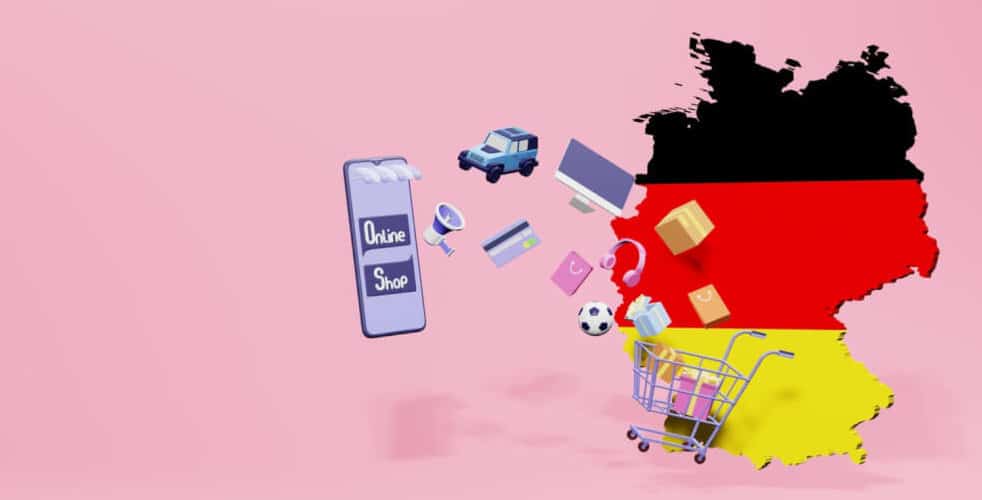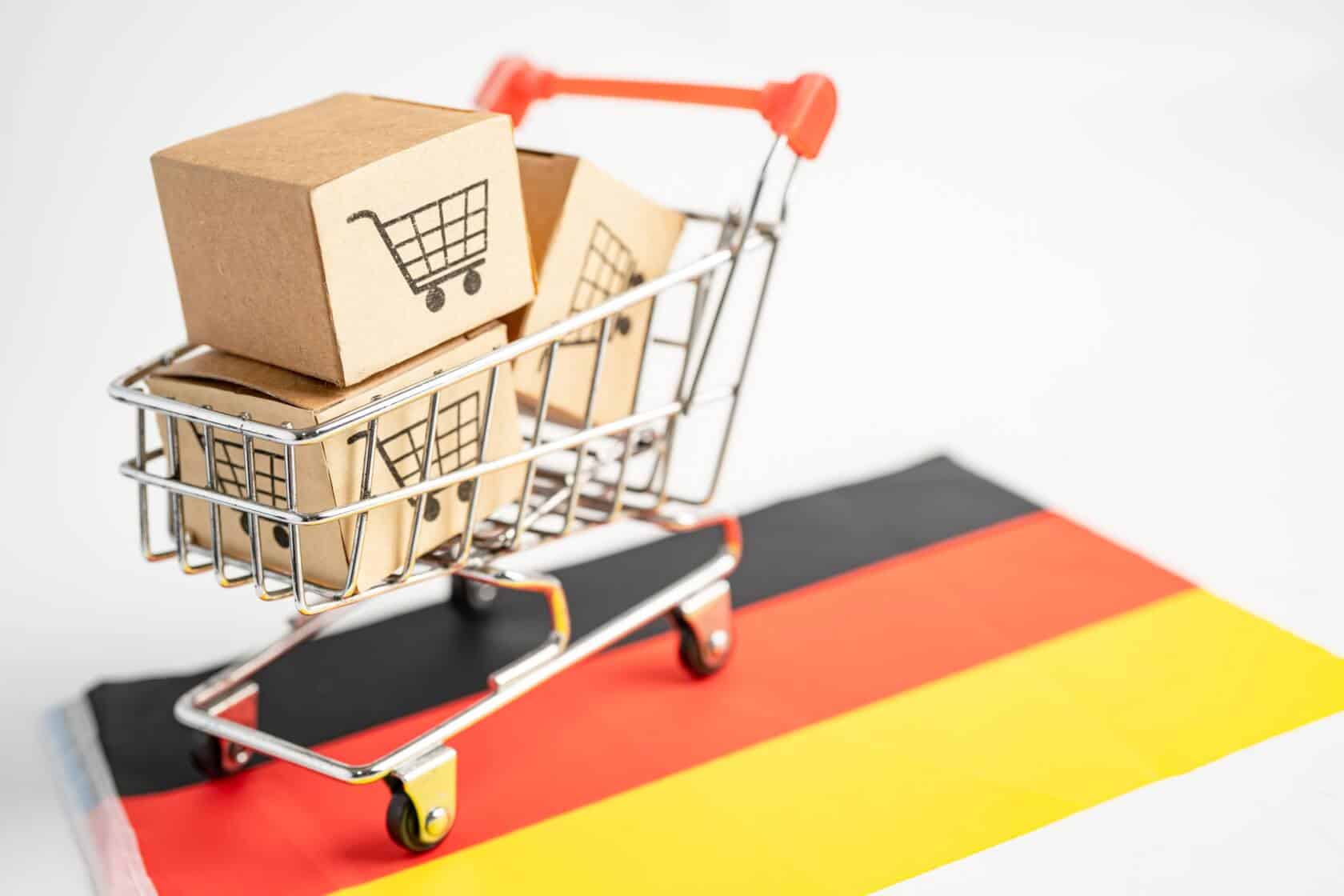E-commerce is the most revolutionary initiative in the history of trading and business. In developed countries like Germany, the turnover of e-commerce in the country's economy is high, while digital infrastructures like computers, the internet, smartphones, and online payments are already well developed.
The significant adoption of the Internet has created an ideal rapid shift in the way businesses are conducted today. A new kind of commerce: e-commerce, the buying, and selling of goods through human-computer interaction over the Internet, has emerged in the past decade. Traditional physical trading of goods and currency is becoming progressively out of favor, and many businesses are switching to the e-commerce model. This article will briefly discuss the history of e-commerce in Germany and how it changes the customer’s behavior and demands, the critical success elements of online business in Germany, and which companies are doing great online.
What Is E-Commerce?

Ritendra Goel explained in the e-commerce book that e-commerce can be defined as a modern business methodology that addresses the needs of organizations, merchants, and consumers to cut costs while improving the quality of goods and services and increasing the speed of service delivery by using the Internet.
The difference between e-commerce and traditional commerce is that e-commerce enables the trading of goods, money, and information electronically from computer to computer. Business is done electronically, and there is no longer a need for physical currency or goods to conduct business.
Emerging e-commerce has contributed to a combination of regulatory reform and technological innovation. The Internet plays an essential role in the evolution of e-commerce invented in the late 1960s, while today’s e-commerce appeared with the World Wide Web (WWW) and browsers in the early 1990s. The factor that helped in that rapid growth and expanded the volume and the capacity of communications was the legalization of the telecommunications sector and innovations such as optic fiber, Digital Subscriber Line (DSL), etc.
To sum up the areas of e-commerce, there are four main areas in which companies conduct business online today:
- Direct marketing, selling, and services
- Online banking and billing
- Secure distribution of information
- Value-chain trading and corporate purchasing.
Germany in a Glance

Germany silently became a European e-commerce powerhouse. Since World War II, Germans accomplished the best work attitude when innovation is the proven way to be successful in the world. The essential vital reasons for success are an excellent communication technology infrastructure and, in general, highly skilled people with good work ethics (i.e., being comparatively hard-working and working on time) who can adapt to changing needs quickly. Consequently, Germans take the economic lead when integrating complex systems and processes and creating a competitive advantage; for example, Germany’s network infrastructure is excellent. Also, with the increased invention activity in some areas of information and communication technology, Germany will make great strides in e-commerce.
Furthermore, Germany, the third-largest industrialized country in the world and the largest in Europe, exercises a particular path in e-commerce. Nearly 83 million highly educated people create an enormous demand for adopting the new information and communication technologies (ICT) to increase ease of life.
Facts and Infrastructure

Based on a study Globalization and E-Commerce II: Environment and Policy in Germany in 2003, some critical facts and findings help us know why Germany is doing great in e-commerce and the factors that support this nation accordingly.
An important factor is the geographic position of Germany in the center of Europe. The central position of Germany as a hub in Europe, together with the excellent public and private transport infrastructure, is a competitive advantage in attracting foreign investments.
An important e-commerce service in Germany is online banking and brokerage services. Thirty-seven percent of all Internet users conducted online banking, equal to 15 million bank accounts at the beginning of 2001.
The most critical reasons hindering greater use of e-commerce overall are the lack of a better service mentality and the general wait-and-see attitude of German employees.
Due to its economic power as the largest economy in Europe and the third-largest in the world, Germany inevitably will play an important role in e-commerce.
After the improvement and diffusion of high-speed Internet access, like Integrated Services Digital Network (ISDN) or Digital Subscriber Line (DSL), Germany enjoys more ISDN telephone lines than any country; it also has the highest DSL per capita ratio in Europe.
Germany includes a large, highly educated, and relatively wealthy population, essential for successful e-commerce activities. Due to foreign language skills in the German people (every student is required to learn English; a large number know basic French or Spanish, too), the language barrier to using international websites is small. Moreover, the German education system emphasizes information and communications technology (ICT) skills.
Invention activity in some areas of ICT shows signs of improvement. Starting from a low level, patent activity in mobile communications and the internet grew faster in Germany than anywhere else in Europe.
The e-government initiatives are centrally coordinated by the Federal Ministry of the Interior, unlike the private e-commerce initiatives led by the Federal Ministry for Economic Affairs. Therefore, the e-government projects in Germany are uniform at the federal levels but vary from state to state and city to city.
Internet adoption and use are measurable through different indicators, such as the number of Internet hosts, secure servers, and internet users. Germany had 32.3 internet hosts per 1,000 inhabitants, or a total of 2.6 million internet hosts, in July 2000.
A more reliable indicator of the accessibility of the internet for e-business is the total number of secure servers. Germany operated six secure servers with low, and roughly five with high encryption per one hundred thousand inhabitants in 2000.
Besides age and location, internet use depends strongly on the user’s education level. With an increase in literacy, the regular use of the internet increases.
The main drivers of e-commerce use and diffusion in the B2B sector are the solid international competition and globalization of the export-oriented German industry.
In the B2C sector, e-commerce is strongly driven by the highly skilled and educated population, already familiar with PCs, the internet, and several foreign languages. The second B2C enabler is the relatively high-income level, which is equally well-distributed, allowing a high standard of living for nearly all social layers.
The Federal Republic of Germany (FRG) and its local states invested heavily in raising awareness and funding programs to improve the diffusion and penetration of e-commerce and related initiatives to pave Germany’s way toward the information society.
B2C e-commerce on the internet is growing in Germany, with 56.4% of internet users buying online at least once in 2001. More than 75% of users search for products, compare prices on the web, and then purchase the products at the cheapest or nearest brick-and-mortar store.
Top 10 B2C E-Commerce Sites in Germany:
- Amazon Germany
- eBay Germany
- eBay Kleinanzeigen
- Otto
- Idealo
- MediaMarkt
- Lidl
- Zalando
- Thomann
- Saturn
Photo: sasirin pamai/Shutterstock
You might also like:
Support us!
All your donations will be used to pay the magazine’s journalists and to support the ongoing costs of maintaining the site.
Share this post
Interested in co-operating with us?
We are open to co-operation from writers and businesses alike. You can reach us on our email at [email protected]/[email protected] and we will get back to you as quick as we can.










